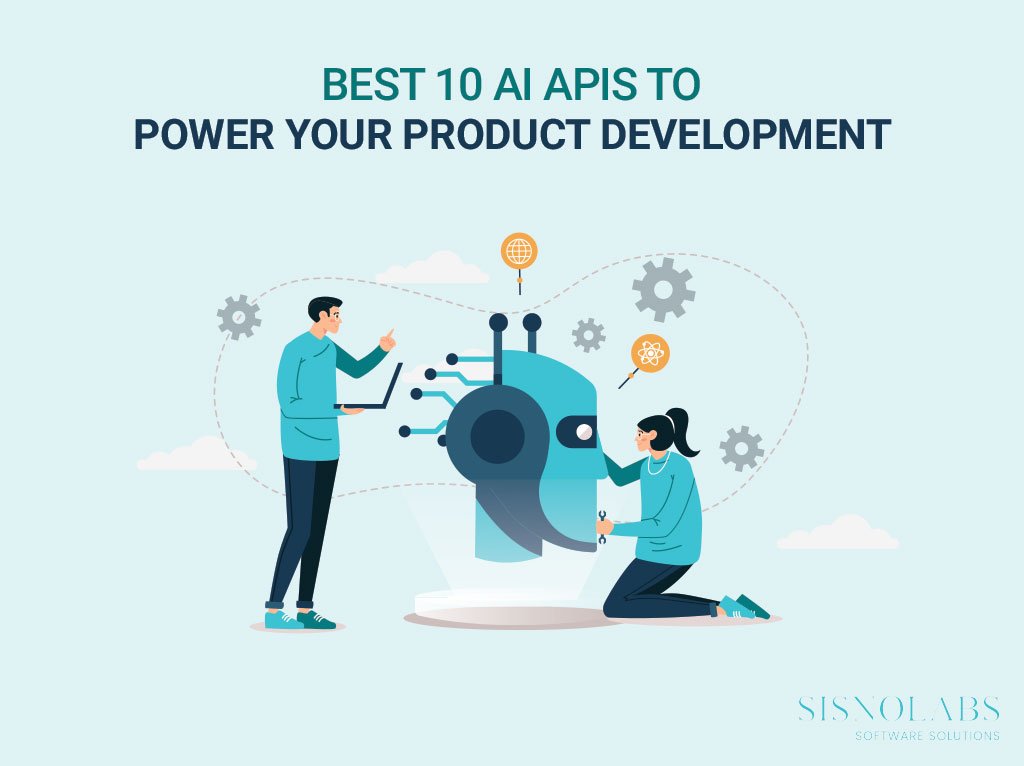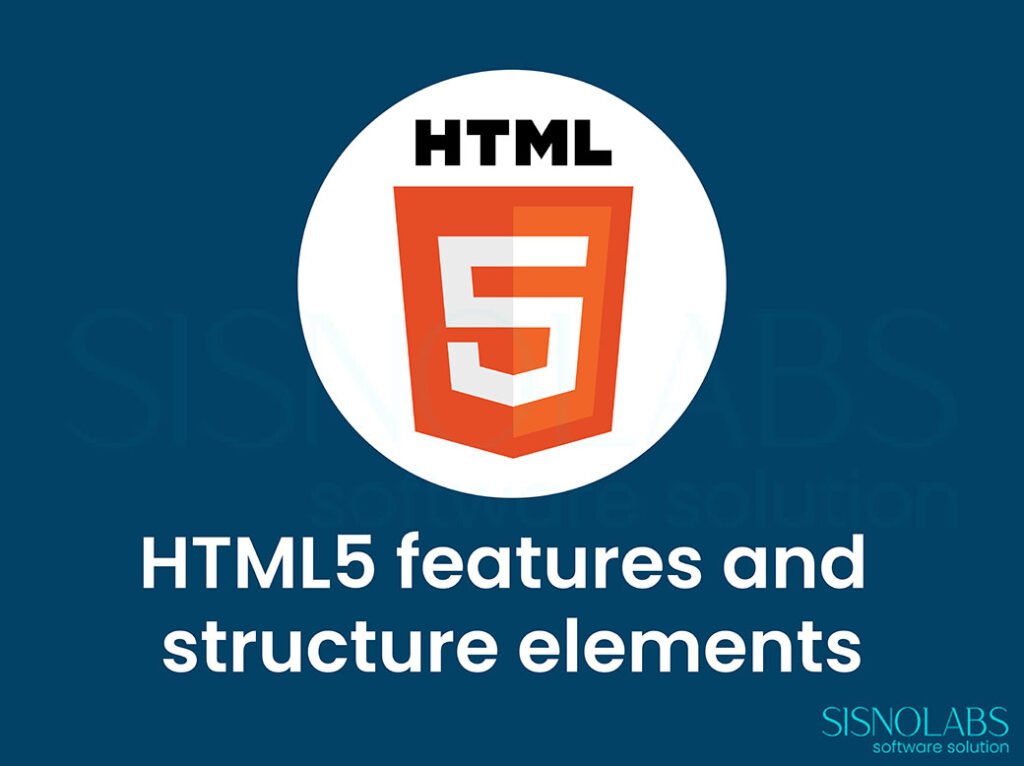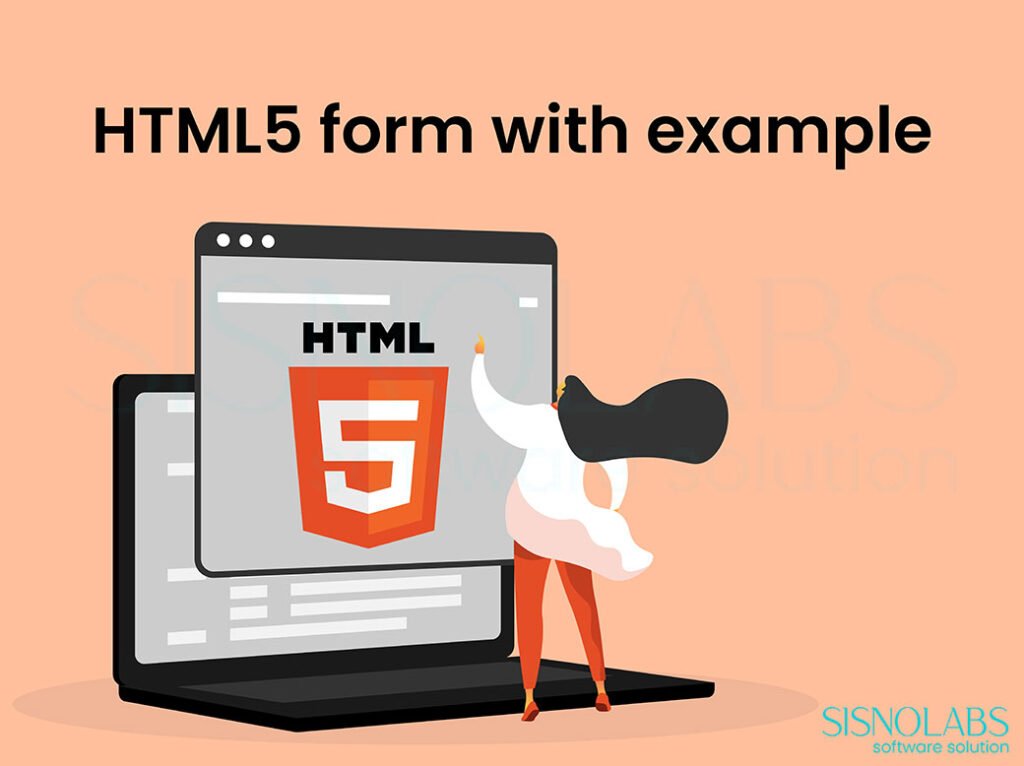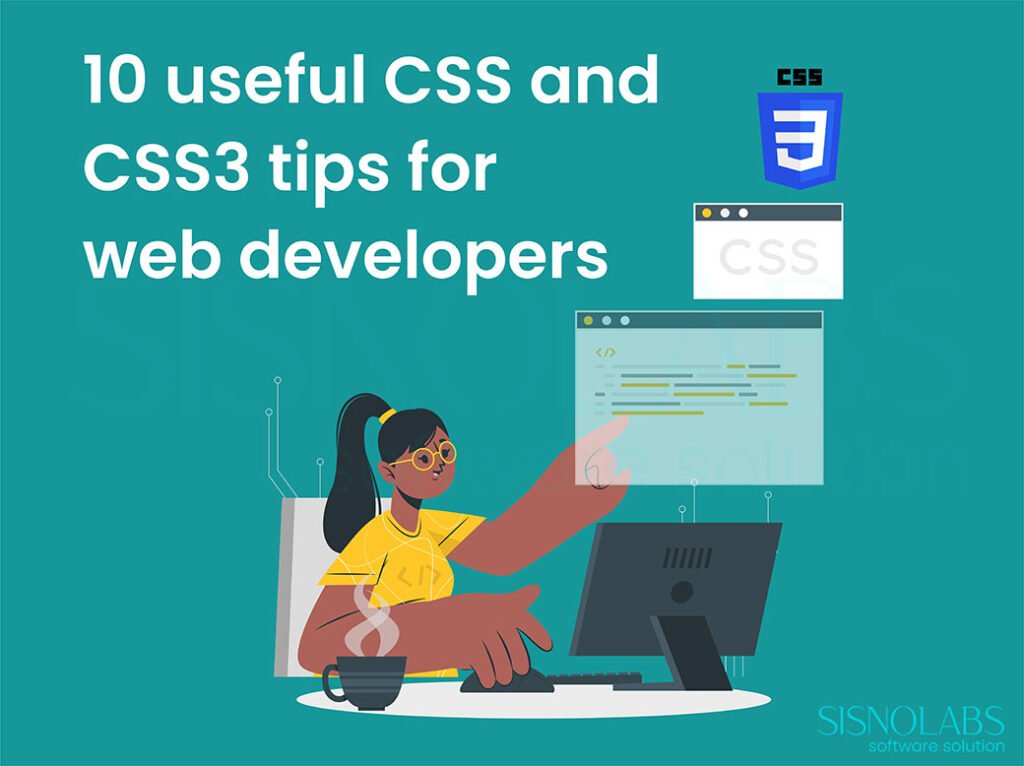In today’s fast-moving tech world, AI is changing how businesses build and enhance their products. Going into 2024, using AI is getting easier due to all the helpful APIs one could dream of. These tools will enable companies to enhance customer experiences, automate tasks, and make wiser decisions without requiring deep AI knowledge. In this article, we will introduce 10 of the most powerful AI APIs that can unlock innovation for your 2024 product. Whether it is to engage users, smooth out workflows, or just about anything else, these AI-powered APIs harness the power to make ideas come alive and stay ahead of the game.
- OpenAI’s GPT-4
- Google Cloud Vision API
- Amazon Rekognition
- TensorFlow Lite
- Dialogflow
- IBM Watson
- Clarifai
- Microsoft Azure Cognitive Services
- Hugging Face Transformers
- Keras
1. OpenAI’s GPT-4
GPT-4 is an advanced, next-generation model that OpenAI has released, having top-of-the-line performance. It will generate human-level text, translate languages, write creative texts in many forms, and answer your questions in an informative style.
OpenAI has a history of releasing increasingly refined language models. For instance, if GPT-3 was to be considered a milestone upon its release in 2020, then GPT-4 represents a quantum leap in terms of functionalities and output quality.
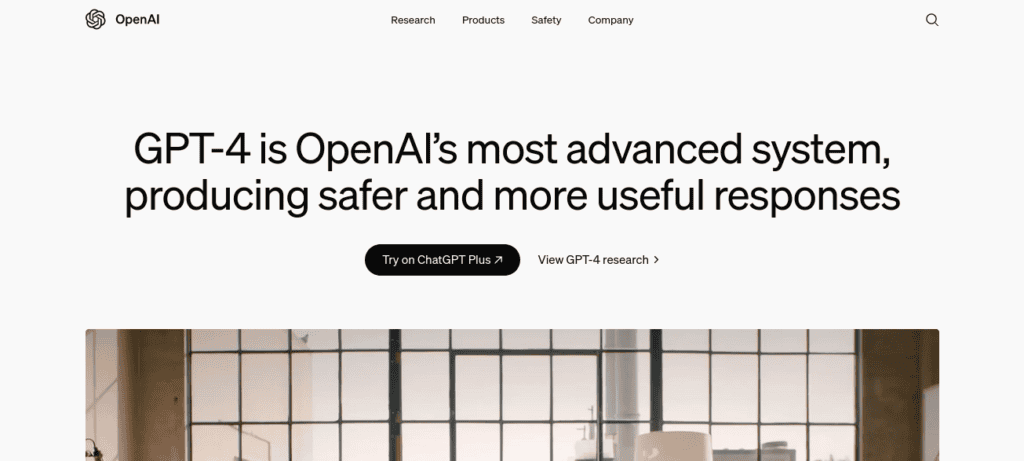
Functionality
- Text Generation: It can generate human-quality text, from creative writing to informative articles.
- Translation: GPT-4 can translate text between languages with high accuracy.
- Question Answering: It can provide informative and comprehensive answers to a wide range of questions.
- Summarization: GPT-4 can summarize long pieces of text into shorter, more concise summaries.
- Creative Writing: It can write different kinds of creative content, such as poems, code, scripts, musical pieces, emails, letters, etc.
GPT-4 can be used to create chatbots, generate creative content, and improve customer service interactions. For instance, you could use it to develop a virtual assistant that can answer customer inquiries in a natural and informative way.
Products can built
- Language-based applications:
- Chatbots and virtual assistants
- Language translation
- Content creation (e.g., writing articles, generating code)
- Summarization
- Question answering
- Creative applications:
- Story generation
- Poetry writing
- Scriptwriting
- Music composition
- Business applications:
- Customer service
- Sales and marketing
- Data analysis
- Research and development
Here is the link to the OpenAI GPT-4 API manual, which includes examples and integration code.
https://platform.openai.com/docs/overview
2. Google Cloud Vision API
Google Cloud Vision API represents this kind of powerful tool in the hands of developers, which helps extract insights from images and videos. It uses advanced machine learning algorithms in understanding the content of an image, including objects, scenes, and text.
It was announced first on the Google Cloud Platform in the year 2015. Much improvement has been made from then concerning its casting width when it comes to the detection of faces, the recognition of logos, and OCR.
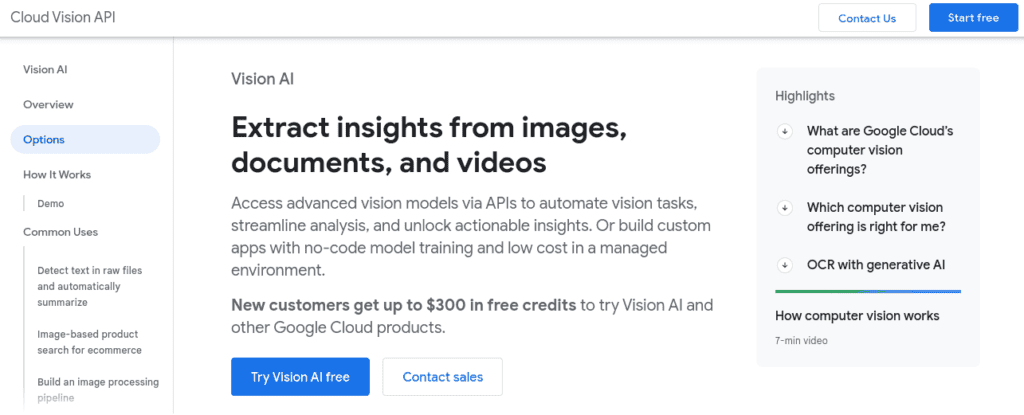
Functionality
- Object Detection: Identifies objects within an image, such as people, animals, and vehicles.
- Label Detection: Assigns labels to images based on their content, such as “beach,” “sunset,” or “city.”
- Face Detection: Detects faces within an image and provides information about their attributes, such as age, gender, and emotions.
- Logo Recognition: Recognizes logos of popular brands within images.
- Optical Character Recognition (OCR): Extracts text from images, including handwritten and printed text.
- Image Properties: Provides information about image properties, such as dominant colors and crop hints.
- Explicit Content Detection: Identifies potentially explicit or offensive content within images.
API can be used to build image search engines, augment reality experiences, and improve product recommendations. For example, you could use it to create a mobile app that allows users to identify products in real-time and get more information about them.
Products can built
- Image recognition:
- Object detection
- Face detection
- Landmark recognition
- Logo detection
- Image analysis:
- Optical character recognition (OCR)
- Image classification
- Image moderation
- Product search:
- Visual search
- Product recommendation
- Augmented reality:
- Object tracking and recognition
- Virtual overlays
Here is the link to the Google Cloud Vision API manual, which includes examples and integration code.
https://cloud.google.com/vision/docs
3. Amazon Rekognition
Amazon Rekognition represents a robust AWS service that allows users to implement image and video analysis in the cloud. It integrates the power of advanced deep learning algorithms into detecting and protecting objects, scenes, faces, and text in images and videos.
Amazon Rekognition came in 2016 for AWS as a machine learning service that went through many improvements since its launch date and grew in its capabilities to include more features such as face search, custom labels, and video analysis.
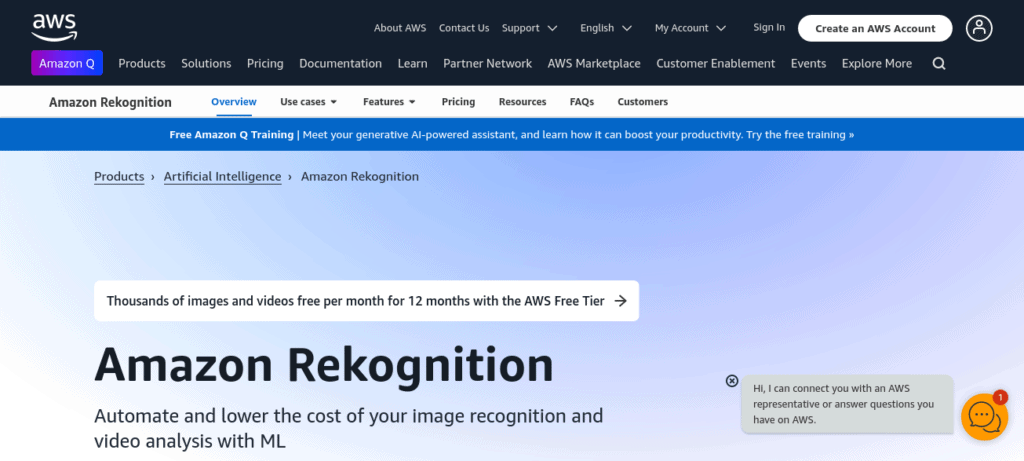
Functionality
- Object Detection: Identifies objects within an image or video, such as people, animals, and vehicles.
- Label Detection: Assigns labels to images based on their content, such as “beach,” “sunset,” or “city.”
- Face Detection and Analysis: Detects faces within images and provides information about their attributes, such as age, gender, and emotions. It can also be used for face search and recognition.
- Text Detection: Extracts text from images, including handwritten and printed text.
- Celebrity Recognition: Identifies celebrities within images.
- Custom Labels: Allows users to create custom labels for objects or scenes that are not included in the pre-trained models.
- Video Analysis: Analyzes videos to detect objects, faces, and text over time.
Similar to Google Cloud Vision API, Amazon Rekognition can be used for various applications such as image search, content moderation, and security. For instance, you could use it to develop a security system that can detect unauthorized access or suspicious activity.
Products can built
- Image recognition:
- Object detection
- Face detection
- Landmark recognition
- Logo detection
- Image analysis:
- Optical character recognition (OCR)
- Image classification
- Image moderation
- Video analysis:
- Video moderation
- Person detection
- Activity recognition
- Product search:
- Visual search
- Product recommendation
Here is the link to the Amazon Rekognition API manual, which includes examples and integration code.
https://docs.aws.amazon.com/rekognition/latest/dg/what-is.html
4. TensorFlow Lite
TensorFlow Lite is a lightweight version of TensorFlow, the open-source machine learning framework by Google, destined for limited resources, deployed on mobile and embedded devices, from smartphones and tablets to complex IoT devices.
TensorFlow Lite was first introduced in 2017 for bringing in machine learning models on both mobile and embedded devices. Since its introduction, this library underwent a lot of improvements and optimizations due to which it became even more efficient and versatile.
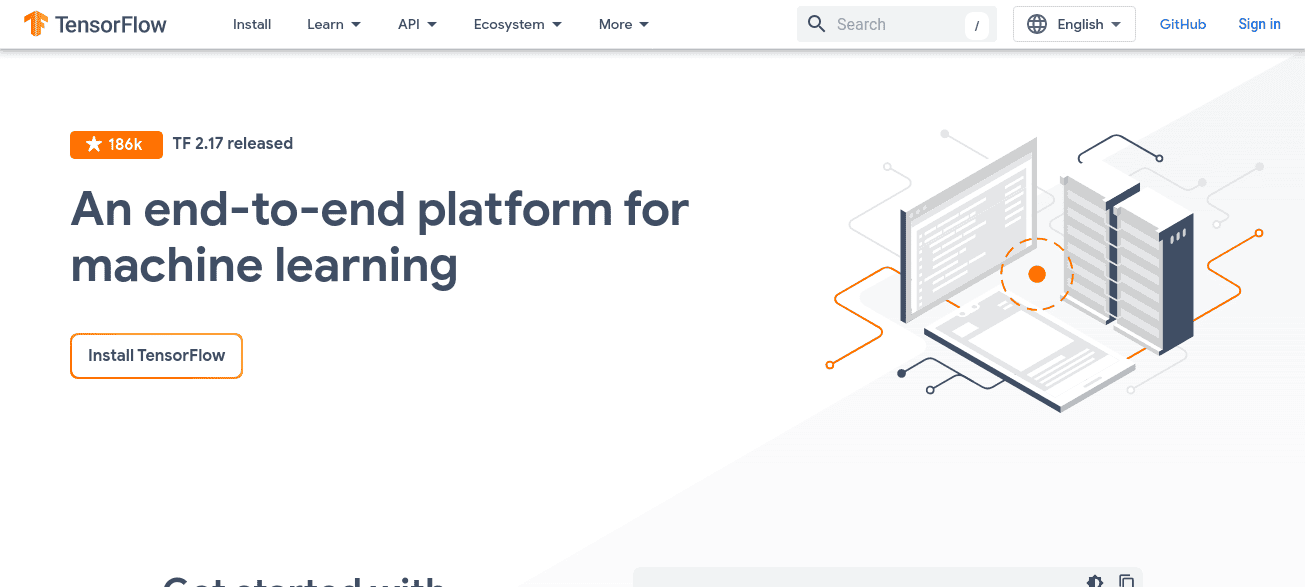
Functionality
TensorFlow Lite offers a variety of functionalities that make it suitable for mobile and embedded machine learning:
- Model Conversion: It can convert TensorFlow models trained using the full TensorFlow framework into a format that is optimized for mobile and embedded devices.
- Model Optimization: TensorFlow Lite includes tools for optimizing models, such as quantization and pruning, to reduce their size and improve their performance.
- Runtime Support: It provides a runtime environment for executing machine learning models on mobile and embedded devices.
- Hardware Acceleration: It can leverage hardware acceleration features on supported devices, such as GPUs and TPUs, to improve model performance.
- API Support: It offers APIs for various programming languages, including C++, Java, and Python, making it easy to integrate into your applications.
TensorFlow Lite allows you to run machine learning models on devices with limited resources, such as smartphones and IoT devices. For example, you could use it to create a mobile app that can recognize objects or predict user behavior.
Products can built
The TensorFlow Lite API can be used to build a wide variety of products and applications, including:
- Mobile applications:
- Image classification
- Object detection
- Natural language processing
- Pose estimation
- Embedded devices:
- IoT devices
- Wearables
- Robotics
Here is the link to the TensorFlow Lite API manual, which includes examples and integration code.
https://ai.google.dev/edge/litert
5. Dialogflow
Dialogflow is one of the powerful chatbot building platforms that create conversational interfaces, including chatbots and voice assistants. It works together with both NLU and NLP, considering natural interactions for users and giving responses in turn.
It was originally developed by Api.ai, a company developing interfaces in the field of conversation. Later, in 2018, it was acquired by Google, and this brought Dialogflow under the hood of the Google Cloud Platform. Hence, new improvements came to Dialogflow, and new capabilities had been added much more than it used to be with the exponential growth of use cases.
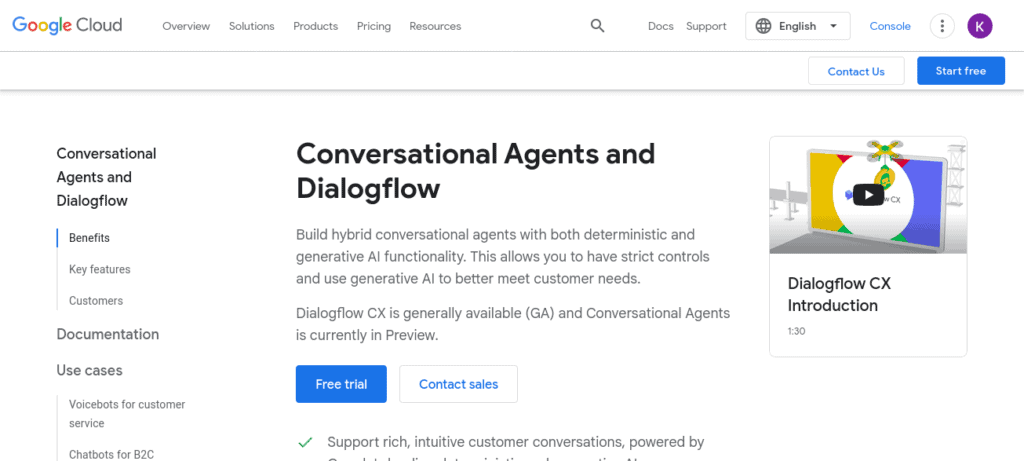
Functionality
- Natural Language Understanding (NLU): Dialogflow can understand and interpret user input, even if it is phrased in different ways or contains errors.
- Intent Detection: It can identify the user’s intent based on their input, such as asking a question, making a request, or providing information.
- Entity Extraction: It can extract relevant entities from user input, such as names, dates, and locations.
- Dialog Management: It can manage the flow of the conversation and guide the user towards a desired outcome.
- Integration with Other Services: Dialogflow can be integrated with other Google Cloud services, such as Google Assistant, Cloud Functions, and BigQuery, to create more sophisticated conversational interfaces.
- Custom Voice Agents: It allows you to create custom voice agents that can interact with users through voice commands.
Dialogflow can be used to create intelligent chatbots and voice assistants that can interact with users in a natural and engaging way. For example, you could use it to develop a chatbot that can provide customer support or answer frequently asked questions.
Products can built
- Chatbots and virtual assistants:
- Customer service chatbots
- Virtual personal assistants
- Educational chatbots
- Voice-activated devices:
- Smart home devices
- Automotive voice assistants
- Call centers:
- Automated customer service agents
- Interactive voice response (IVR) systems
Here is the link to the Dialogflow API manual, which includes examples and integration code.
https://cloud.google.com/products/conversational-agents#documentation
6. IBM Watson
IBM Watson is a collection of AI-related services from IBM. It leverages deep machine learning and NLP expertise to help your business derive new insights from and connect your data in new ways. Watson offers an open and scalable AI platform for applying Artificial Intelligence to your applications.
IBM Watson burst into prominence back in 2011 after defeating human champions in the game show Jeopardy! Since then, it’s been more of a full-service platform in terms of a suite of AI services.
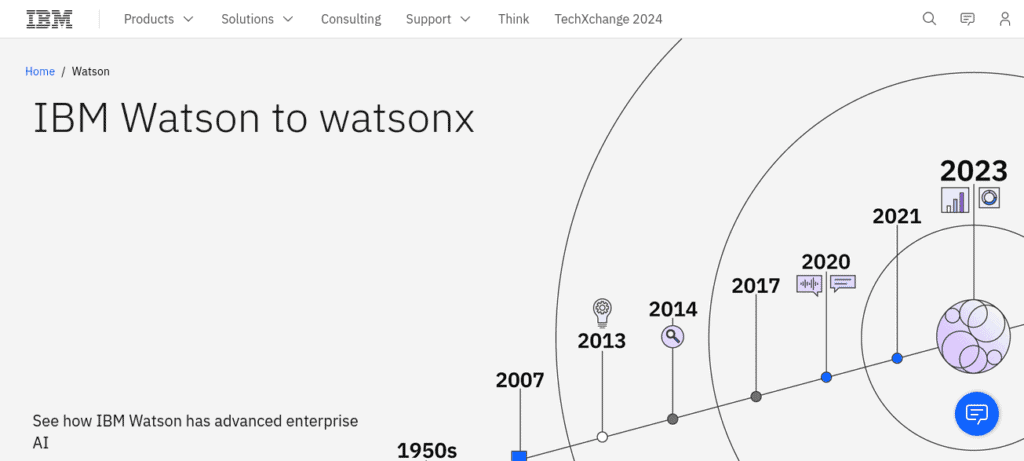
Functionality
- Natural Language Understanding (NLU): Understanding and interpreting human language, including text and speech.
- Natural Language Processing (NLP): Analyzing and processing human language, including tasks like sentiment analysis, text classification, and machine translation.
- Machine Learning: Building and training machine learning models for various tasks, such as image recognition, speech recognition, and predictive analytics.
- Speech to Text: Converting spoken language into text.
- Text to Speech: Converting text into spoken language.
- Visual Recognition: Analyzing images and videos to identify objects, scenes, and faces.
- Conversation: Building conversational interfaces, such as chatbots and virtual assistants.
- Personality Insights: Analyzing text to understand personality traits.
- Tone Analyzer: Analyzing text to understand the tone and emotion behind the words.
API can be used to extract meaning from text, analyze sentiment, and identify key concepts. For example, you could use it to analyze customer feedback and identify areas for improvement.
Products can built
- Natural language processing:
- Language translation
- Sentiment analysis
- Text classification
- Question answering
- Machine learning:
- Predictive analytics
- Anomaly detection
- Recommendation systems
- Computer vision:
- Image recognition
- Object detection
- Facial recognition
- Speech recognition:
- Transcription
- Voice-to-text
- Chatbots and virtual assistants:
- Customer service chatbots
- Virtual personal assistants
- Educational chatbots
Here is the link to the IBM Watson API manual, which includes examples and integration code.
https://www.ibm.com/docs/en/watsonx
7. Clarifai
Clarifai is the leading artificial intelligence vision platform for visual recognition of images and videos. With high-performance machine learning algorithms, it understands inside information that comes with visual content and finds important insights in images and videos.
Founded in 2013, the vision of Clarifai was to make computer vision accessible to everybody. In a very short period of time, Clarifai gained recognition for adopting novel approaches toward the recognition of images and handling datasets of largetures.
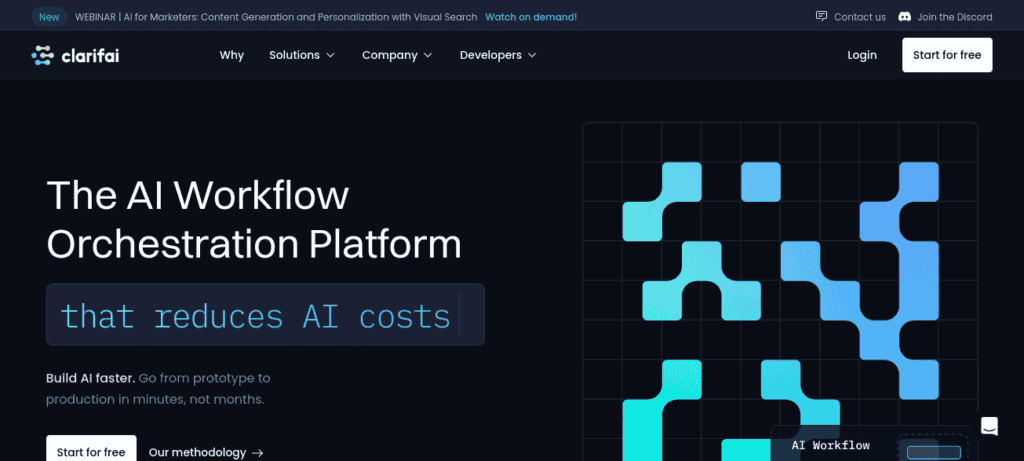
Functionality
- Image and Video Recognition: Identifying objects, scenes, and concepts within images and videos.
- Custom Models: Creating custom models trained on your own data to recognize specific objects or concepts.
- Face Detection and Recognition: Detecting and recognizing faces within images and videos.
- Text Detection: Extracting text from images, including handwritten and printed text.
- Content Moderation: Filtering out inappropriate or offensive content from images and videos.
- Visual Search: Allowing users to search for images based on visual content.
- Augmented Reality: Creating augmented reality experiences that overlay information on top of real-world images.
Clarifai offers a wide range of image and video analysis capabilities that can be used for various applications such as content moderation, image search, and visual search. For example, you could use it to create a social media platform that can automatically filter inappropriate content.
Products can built
- Image recognition:
- Object detection
- Face detection
- Landmark recognition
- Logo detection
- Image analysis:
- Optical character recognition (OCR)
- Image classification
- Image moderation
- Product search:
- Visual search
- Product recommendation
- Augmented reality:
- Object tracking and recognition
- Virtual overlays
Here is the link to the Clarifai API manual, which includes examples and integration code.
8. Microsoft Azure Cognitive Services
Microsoft Azure Cognitive Services speaks to a suite of AI services that the company leverages in exposing to developers the capability to build smart applications with the ability to see, hear, speak, and understand the interpretation of what events happen around them.
First brought to market in 2016, Microsoft Azure Cognitive Services was intended to put AI in a box for developers of all skill levels. Fast-forward to the current day, and the suite has grown to include a wide range of services for everything from computer vision to natural language processing to speech recognition, among others.
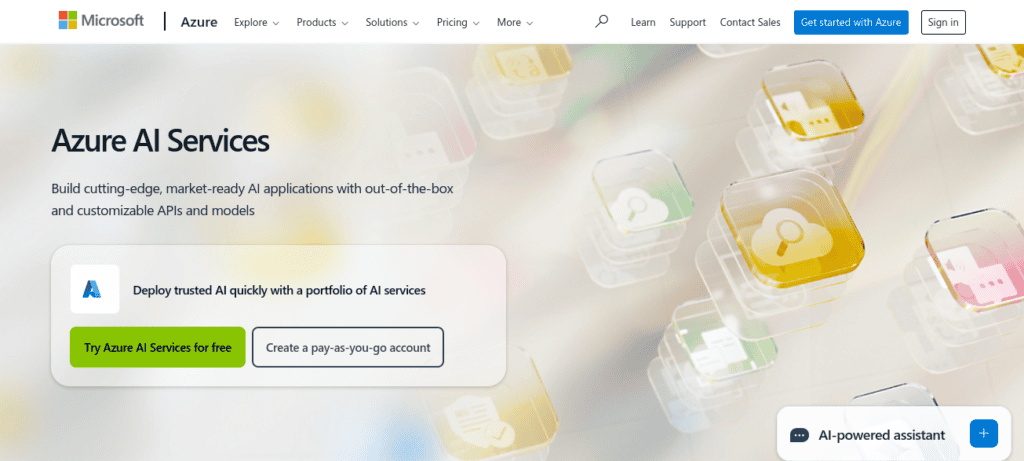
Functionality
- Computer Vision: Analyzing images and videos to identify objects, scenes, and faces.
- Natural Language Processing (NLP): Understanding and interpreting human language, including tasks like sentiment analysis, text classification, and machine translation.
- Speech Recognition: Converting spoken language into text.
- Text to Speech: Converting text into spoken language.
- Knowledge Mining: Extracting knowledge and insights from unstructured data.
- Search: Building intelligent search experiences that can understand user queries and provide relevant results.
- Decision Services: Making predictions and recommendations based on data.
- Bot Services: Building intelligent chatbots and virtual assistants.
Azure Cognitive Services offers a comprehensive set of AI tools that can be used to build intelligent applications. For example, you could use it to create a virtual assistant that can schedule meetings, answer emails, and perform other tasks.
Products can built
- Natural language processing:
- Language translation
- Sentiment analysis
- Text classification
- Question answering
- Machine learning:
- Predictive analytics
- Anomaly detection
- Recommendation systems
- Computer vision:
- Image recognition
- Object detection
- Facial recognition
- Speech recognition:
- Transcription
- Voice-to-text
- Chatbots and virtual assistants:
- Customer service chatbots
- Virtual personal assistants
- Educational chatbots
Here is the link to the Microsoft Azure Cognitive Services API manual, which includes examples and integration code.
https://learn.microsoft.com/en-us/azure/ai-services/
9. Hugging Face Transformers
Hugging Face Transformers is an open-source library that provides an easy and memory-efficient way to leverage cutting-edge NLP models. It hosts a big repository of pre-trained models for various tasks such as, but not limited to, text classification, question answering, machine translation, and many more.
In 2018, Hugging Face-a company well-known for products backed by artificial intelligence-released the library called Transformers. This has been an instant hit among NLP researchers and developers due to its simplicity and high quality of pre-trained models.
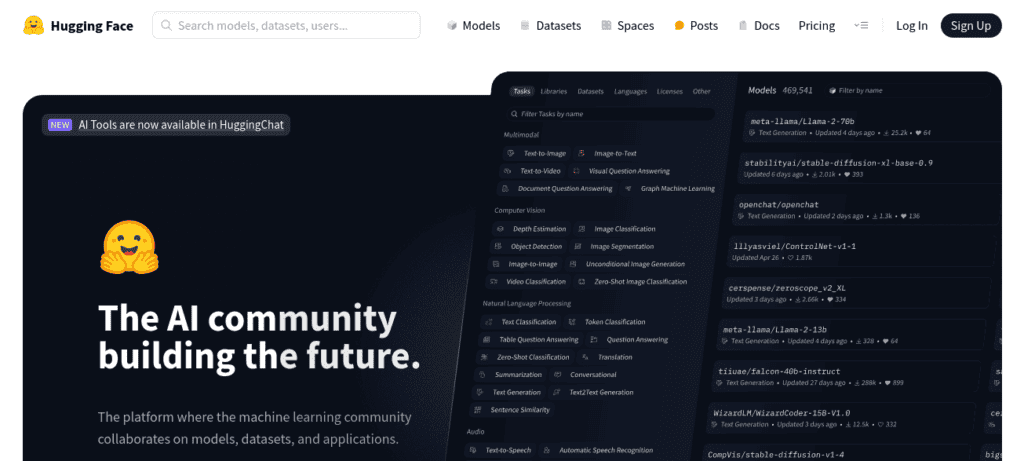
Functionality
- Pre-trained Models: A vast library of pre-trained models for various NLP tasks, such as BERT, GPT-2, RoBERTa, and more.
- Fine-tuning: The ability to fine-tune pre-trained models on your own datasets to adapt them to specific tasks.
- Tokenization: Breaking down text into tokens (words or subwords) for input to NLP models.
- Data Loading and Processing: Tools for loading and preprocessing NLP data.
- Training: A framework for training your own NLP models.
- Inference: Making predictions with trained NLP models.
- Evaluation: Evaluating the performance of NLP models on various metrics.
Hugging Face Transformers provides a library of pre-trained models for various NLP tasks. For example, you could use it to create a chatbot that can generate human-quality text or translate languages.
Products can built
- Natural language processing:
- Text classification
- Named entity recognition
- Question answering
- Text summarization
- Machine translation
- Computer vision:
- Image classification
- Object detection
- Image generation
- Audio processing:
- Speech recognition
- Speech synthesis
Here is the link to the Hugging Face Transformers API manual, which includes examples and integration code.
https://huggingface.co/docs/transformers/index
10. Keras
Keras is an API for making and training deep learning models. It is highly intuitive, and quite easy to learn, thus making it both a great starting point for beginners and a reference guide for experts in the field. Keras is developed atop other deep learning frameworks such as TensorFlow and Theano, thereby equipping it to provide an end-to-end interface in working with different backends.
Keras was originally developed by François Chollet. At the time of development, he was working as an engineer in research at Google. Written in 2015, it is because of simplicity and ease of use that Keras became popular. Later, Keras was adopted by Google itself and integrated with TensorFlow, becoming an integral part of the TensorFlow official ecosystem.
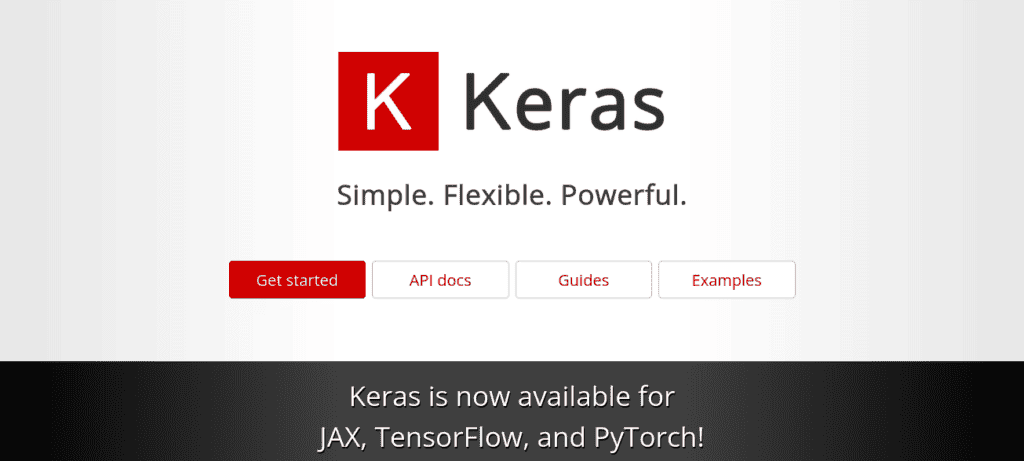
Functionality
- Model Definition: Defining neural network architectures using a modular approach, with layers as building blocks.
- Training: Training models on large datasets using various optimization algorithms.
- Evaluation: Evaluating the performance of models on test data using metrics such as accuracy, loss, and precision.
- Visualization: Visualizing model architectures, training history, and other aspects of the deep learning process.
- Preprocessing: Preprocessing data for input to neural networks, including normalization, standardization, and feature engineering.
- Callbacks: Customizing the training process using callbacks, such as early stopping and learning rate scheduling.
- Deployment: Deploying trained models to production environments.
Keras provides a high-level API for building and training deep learning models. For example, you could use it to develop a neural network that can predict customer churn or recommend products.
Products can built
- Image classification: Identifying objects in images.
- Natural language processing: Tasks like text classification, sentiment analysis, and machine translation.
- Time series analysis: Predicting future values of time-dependent data.
- Recommendation systems: Suggesting items to users based on their preferences.
- Anomaly detection: Identifying unusual patterns in data.
How to use Keras:
- Install Keras and dependencies: Ensure you have Python and the necessary dependencies (like TensorFlow or Theano) installed. Then install Keras using pip:
pip install keras- Build and train your model: Use Keras’s intuitive API to define your neural network architecture, compile it with a loss function and optimizer, and train it on your data.
- Export the model: Once trained, export your Keras model in a format compatible with TensorFlow Lite or TensorFlow.js.
Integrating Keras into ReactJS:
There are two main approaches to integrate Keras into ReactJS:
1. Node.js backend:
- Set up a Node.js server: Create a Node.js server using a framework like Express.
- Load and run the Keras model: Use the
tfjs-nodelibrary to load the exported TensorFlow.js model and run predictions on the server. - Communicate with the ReactJS frontend: Use techniques like HTTP requests or websockets to send data from the frontend to the backend and receive predictions.
2. WebAssembly:
- Compile the Keras model to WebAssembly: Use tools like TensorFlow Lite Converter to convert your Keras model to WebAssembly.
- Load the WebAssembly model in ReactJS: Use the
tfjslibrary to load the WebAssembly model directly in your ReactJS application. - Make predictions: Call the model’s predict method with your input data.
Here is the link to the Keras API manual, which includes examples and integration code.
By leveraging these AI APIs, you can quickly and easily incorporate AI into your 2024 product. These tools offer a wide range of functionalities, from natural language processing to computer vision, making it possible to create innovative and intelligent applications. By carefully selecting the right APIs and understanding their capabilities, you can unlock the full potential of AI and create products that delight your users.
